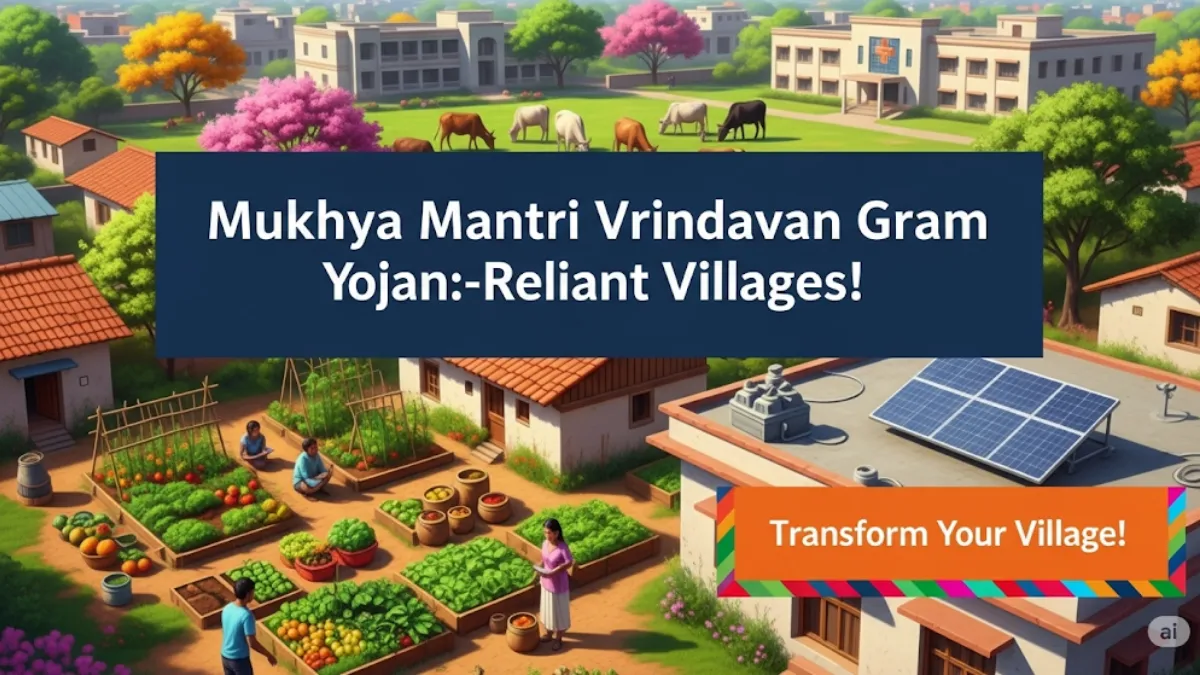- Mukhya Mantri Vrindavan Gram Yojana to develop model self-reliant villages with focus on organic farming, cow rearing, and solar energy.
- Selection of one village per assembly constituency with at least 2,000 population and 500 bovines for holistic development.
- Includes infrastructure development, employment generation, water conservation & alignment with sustainable development goals.
Mukhya Mantri Vrindavan Gram Yojana, approved by the Madhya Pradesh Cabinet, aims to transform selected villages into self-reliant and environmentally sustainable communities. This scheme focuses on comprehensive rural development by blending traditional practices like cow rearing with modern techniques such as solar power and organic farming.
Eligibility and Selection Criteria for Mukhya Mantri Vrindavan Gram Yojana
Under this scheme, one village will be selected from each assembly constituency. To qualify, a village must have:
- A minimum population of 2,000 residents.
- At least 500 bovines like cows or buffaloes.
These conditions ensure that selected villages have enough community and livestock base to support the development activities planned under the scheme.
Also read: Kanya Vivah Yojana Madhya Pradesh – Mandatory BPL Status Verification required Now
Focus Areas and Benefits of Vrindavan Gram Yojana
Mukhya Mantri Vrindavan Gram Yojana aims to balance economic growth and environmental sustainability by promoting:
- Dairy and Livestock Development: Encouraging cow rearing and expanding cooperative-based dairy businesses to boost rural incomes.
- Organic and Natural Farming: Supporting practices that avoid chemical fertilizers and pesticides for healthier crops and soil preservation.
- Renewable Energy Usage: Installing solar energy systems for water supply, street lighting, and other village needs to reduce dependency on conventional power sources.
- Water Conservation: Measures like rainwater harvesting, well recharge, and pond preservation for sustainable water availability.
- Infrastructure Improvements: Building roads, health centers, schools, veterinary hospitals, biogas plants, cremation grounds (Shantidham), libraries, cow memorials, and e-Panchayat services.
- Employment Generation: Establishing milk collection centers, small forest produce and agri-based units, and skill development centers to create jobs locally.
- Cleanliness and Greenery: Promoting cleanliness drives and enhancing greenery for a healthier and more attractive living environment.
- Promotion of Rural Tourism: Encouraging homestays and preserving religious sites to increase tourism-based income.
How to Apply for Vrindavan Gram Yojana
The implementation details will be managed by the state government, with local governing bodies playing a key role. Villagers, local leaders, and cooperatives can engage with Panchayats to express interest and contribute ideas for development plans.
The government will ensure transparent selection and development processes and make sure the villagers actively participate for better outcomes.

